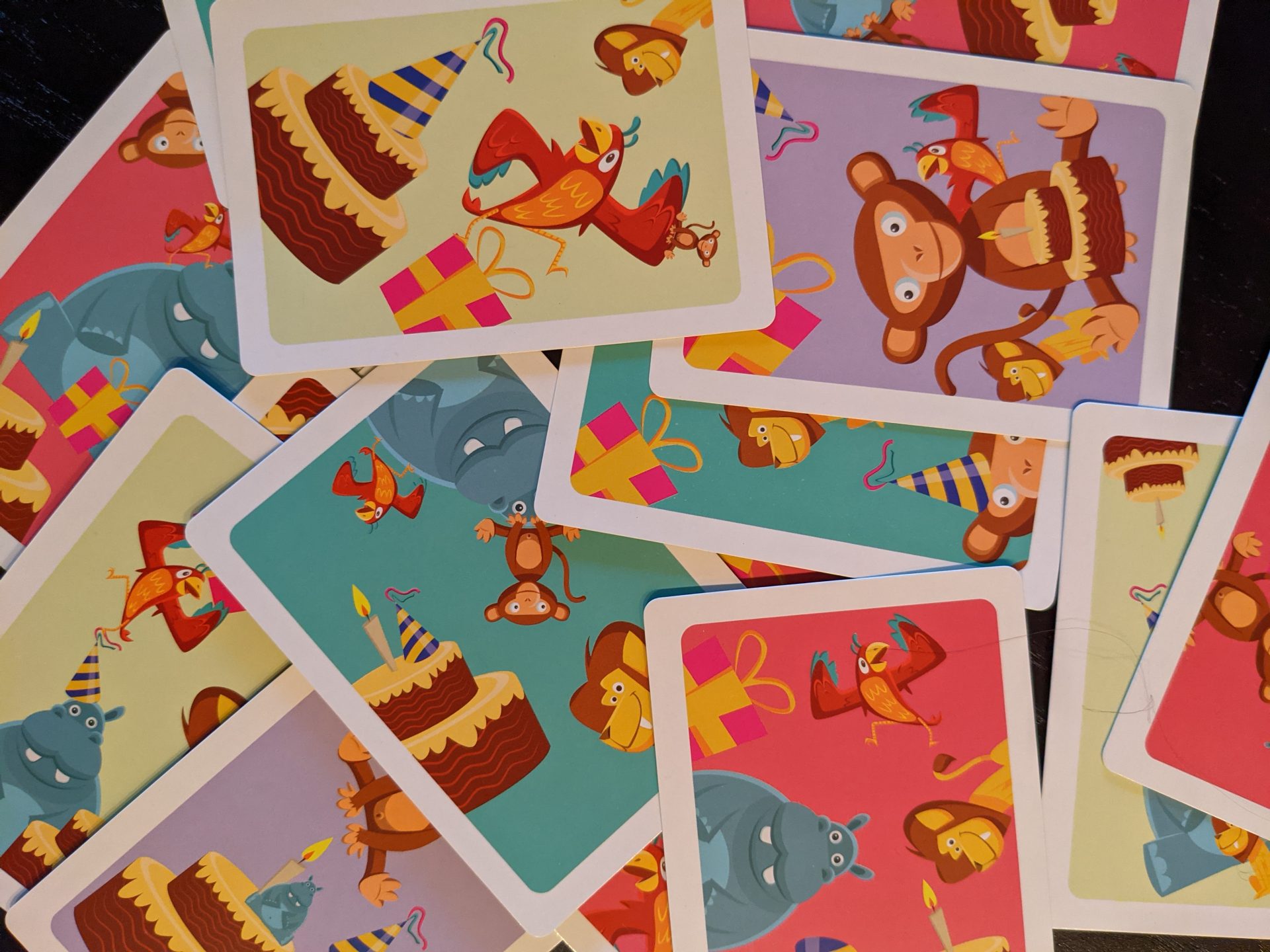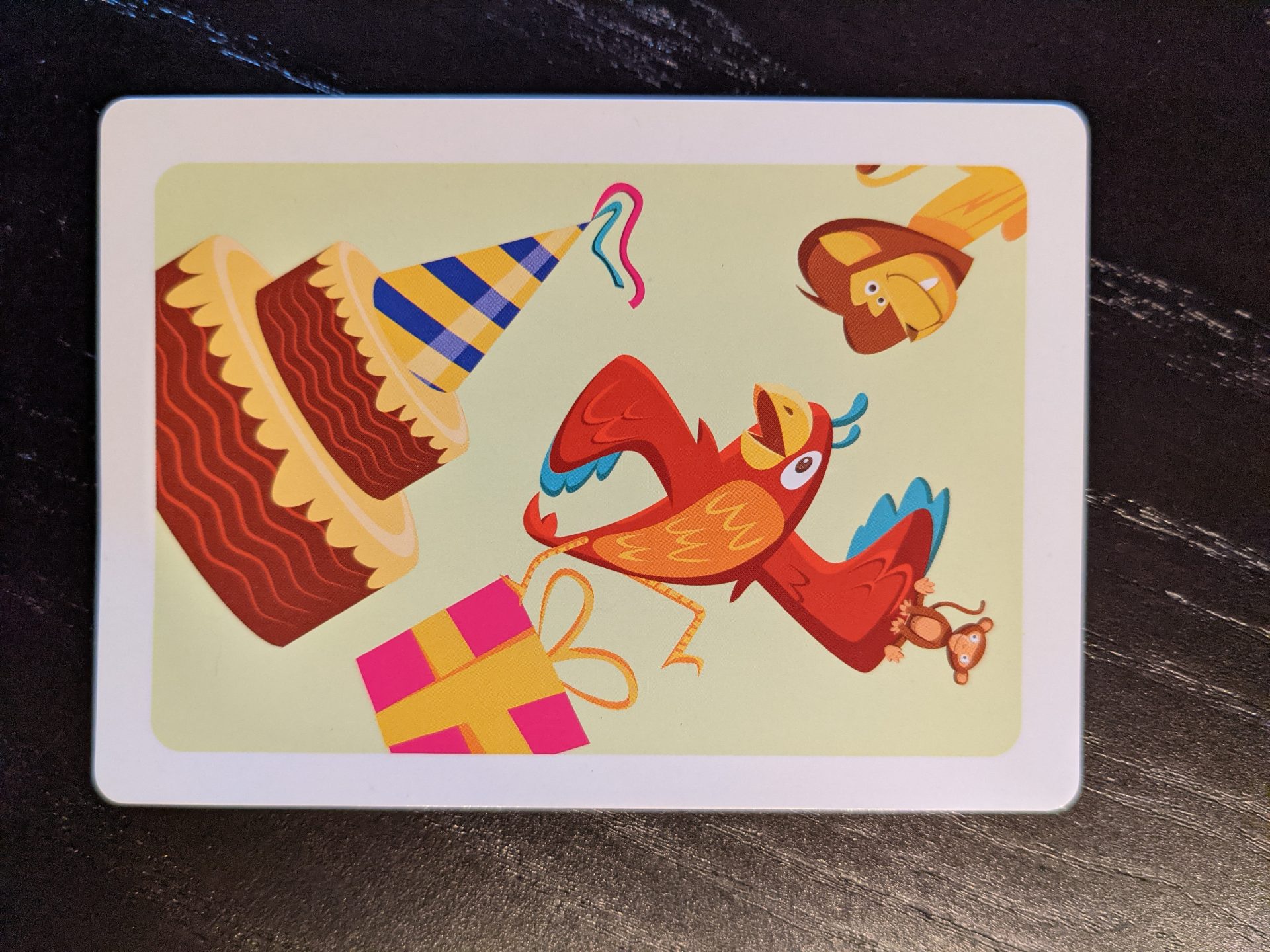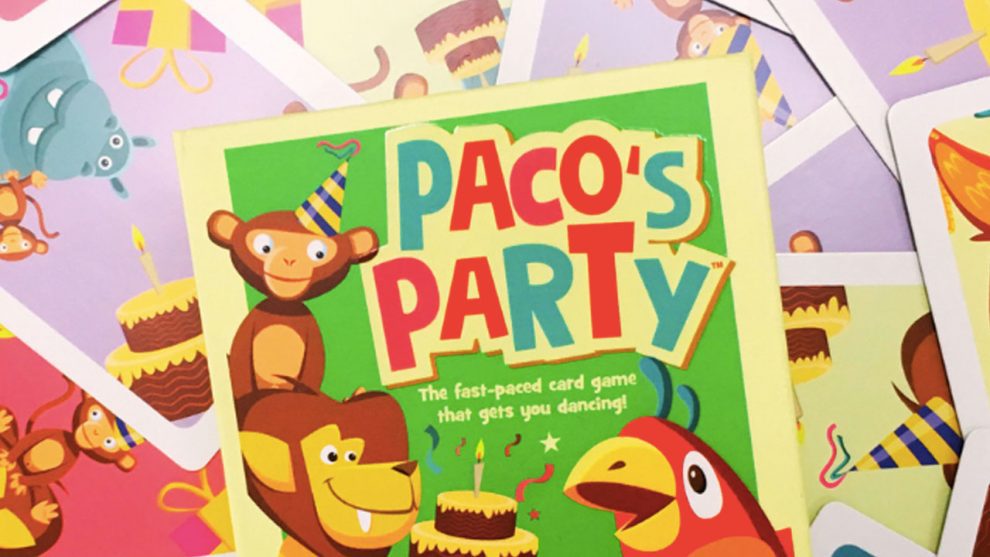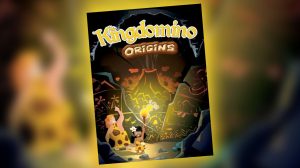Disclosure: Meeple Mountain received a free copy of this product in exchange for an honest, unbiased review. This review is not intended to be an endorsement.
The first time I played Taco Cat Goat Cheese Pizza, my family laughed every time one of us slapped that face-up set of cards and realized that we had done something wrong—called out Taco when in fact it was Pizza, or flinched when reaching to slap a set of cards that were clearly not loaded with Cheese.
But each time I played it, I thought, “This is a great drinking game for adults. It would be AMAZING to have a more kid-friendly approach to this format.”
A few weeks later, Paco’s Party arrived at my door.
As you continue reading this review, keep this in mind if you have kids: you need a game where your child has a built-in advantage to recognize the best way to win, because then your game will be a win for everyone!

“Why are you so good at recognizing Coco???”
The 60-card deck of Paco’s Party is perfect for a family game. After dealing out all of the cards , each player neatly places their stack in front of them face-down. On the back of each card is the legend for the game—the name of each of the four characters in the game, plus three items that will be at the birthday party for our friend Paco.
On your turn you flip one card face-up and place it in the center of the table. Then all players quickly analyze the card; which single character or item is missing? Or, are all seven there, triggering a dance party in honor of our friend Paco?

If one of the characters or items is missing, you have to correctly call that out. If you are right, you take the next turn and play one of the cards from your personal face-down stack. If you are wrong, you take all face-up cards from the center of the play area and put those under your stack of cards, then play your next face-down card.
The goal of the game is to get rid of all your cards. The game starts with the youngest player having a turn and ends when one player is out of cards.
I’ve played a few games of Paco’s Party at two- and three-player counts; even at these lower player counts, I am sold. You can deal less cards when you have a lower player count—12 cards for each player, instead of dealing out the entire deck—and that works better for the attention span of my 7-year-old, who prefers the 10-minute version of this game over the 20-minute version.
No matter how many cards get dealt, I laugh HARD every time I play, and my daughter laughs with and at me even harder.
I think this is mainly because even after a half-dozen plays, I still can’t regularly remember which character is Paco (a parrot), which one is Leo (a lion), and which one is Coco (a monkey). Hippo? No problem; he’s blue, and in the game’s color scheme, Hippo is usually the easiest one to pick out.
The three items? Also somewhat straightforward. You’ve got a present, a hat, and a cake with birthday candles. You can usually pick out which one is missing, if any.
But amongst the seven choices, my seven-year-old daughter mastered all of them by the end of the first game. And for whatever reason, I can never remember Coco’s name when it’s money time, but my daughter always seems to crush it.
“Daddy! You know that you could say ‘Leo the Lion’ to remember the names,” she would say. But I have my OWN system. And I’m going to win my OWN way!!
(Or not. Because I still haven’t won yet.)
And that might be the best part of the magic of Paco’s Party versus other games of its type. It’s almost like the game was built for the youngest person at the table to win. Blue Orange does other smart things with the images on each card; sometimes, Hippo is drawn as the largest character on the card, but sometimes he is so small that he seems to be drawn as tiny as possible. Sometimes the characters are upside-down too, so you can’t immediately recognize any of them.
Like Taco Cat Goat Cheese Pizza, Blue Orange also twists each card in Paco’s Party by changing the card’s background color, keeping all players a bit off-balance.
And sometimes, all seven items and characters are on a card. To correctly take cards in that instance, you have to yell out “Paco’s Party!!!” while also dancing like the way Paco is drawn, flailing arms and all.
Daddy can dance, but he can’t always yell “Paco’s Party” as fast as a 7-year-old. Advantage: my daughter.

The Answer? Yes!
Taco Cat Goat Cheese Pizza is a winner in our house, but for a family-friendly experience for young kids, Paco’s Party fits better because of the characters, the artwork, and the dancing.
I love having games like Paco’s Party because it’s great when the kids have a slight advantage, as opposed to games where it feels like we have to ease off the gas in order for kids to have a chance to win. Paco’s Party fits that bill; my daughter has regularly beaten us with no additions to her gaming abilities. She just knows the four animal characters and three birthday items better and it is up to us to catch up to her.
We brought Paco’s Party on a recent road trip and the game works very well as a “what do we do with the kids for 15 minutes before bedtime?” act, especially since the deck of cards and the packaging is small enough to slip into a backpack or a purse.
Get Paco’s Party into the rotation; it’s earned a permanent spot on our family gaming shelf.












Add Comment